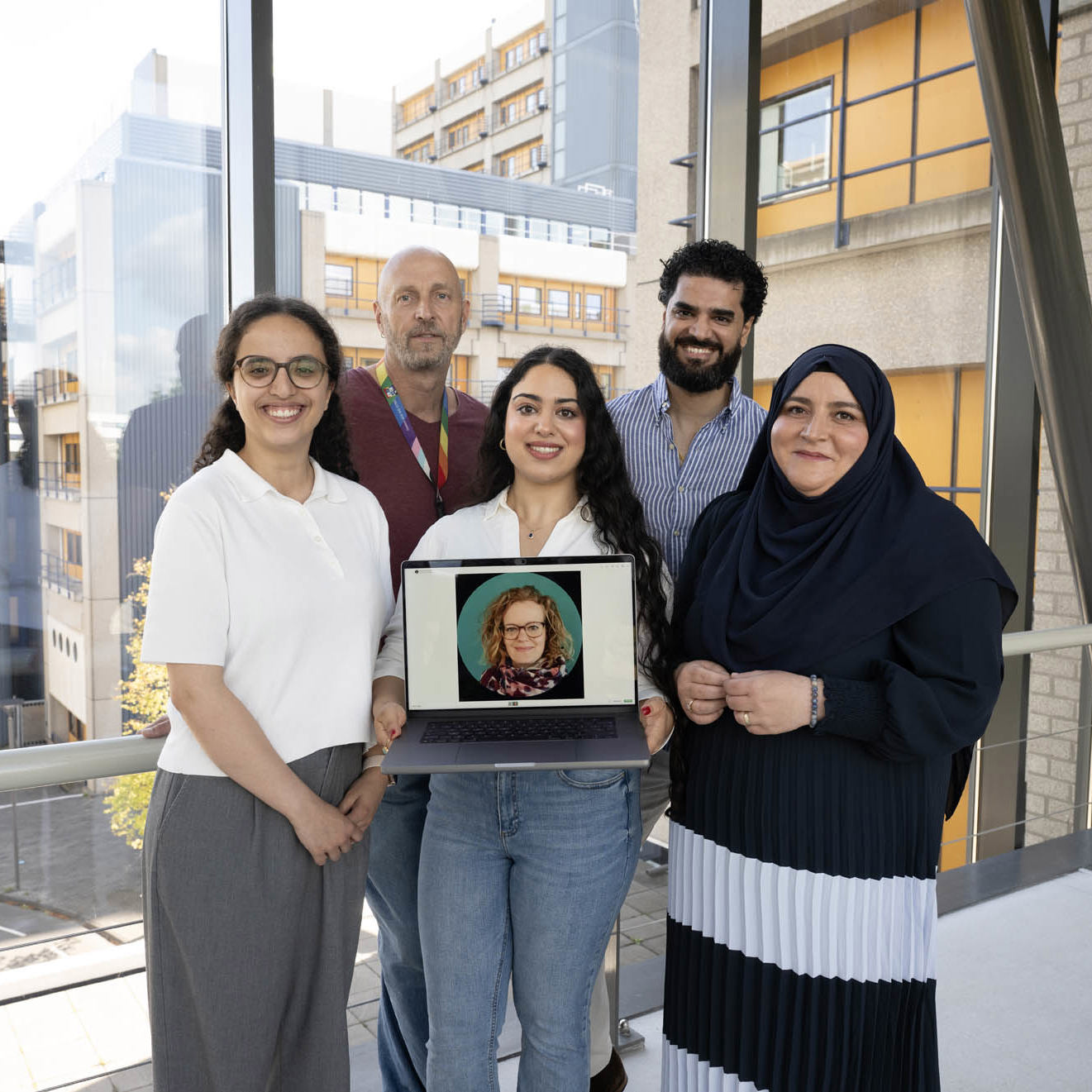Marit Sijtsema, Raju Talwar, Adriaan Norbart, Nejla Bekdur, Nour Al Kuhaili
&width=400&height=400)
“Society deserves healthcare professionals who can recognize, understand, and value differences and similarities.”
How did the Impulse Team come about?
The Impulse Team D&I at LUMC was established from the desire to structurally integrate diversity and inclusion into education and the work environment.
Nour Al Kuhaili: “Marit and I discussed the idea for this team with others in the organization, including the dean. There was enthusiasm, but also time needed to carefully define what we wanted to achieve. An important starting point was that the initiative should go beyond just cultural diversity. It needed to encompass all forms of diversity and connect with existing groups and initiatives. We realized a coordinator was needed to support the initiative. Soon after, we involved students in the team, because their perspective is essential. Today, we have great student assistants actively working on reviewing education and contributing to a more inclusive curriculum.”
How do you experience diversity and inclusion in your workplace?
Nejla Bekdur, internist-geriatrician and team coordinator: “During my studies and training as an internist, I was already engaged with D&I, for example by giving presentations on culturally sensitive care. With the Impulse Team, I want to actively help further embed D&I in practice and education so that good intentions become concrete and we can make real impact.”
Alongside Nejla, three student assistants contribute. Together with the team, they engage with programs: what is already happening in D&I, what challenges do students or teachers encounter, and what are the blind spots? The team screens teaching materials, supports lecturers, and investigates students’ experiences of education.
Sarah, medical master's student: “As a student, I often felt underrepresented in teaching materials. And if I did see myself reflected, it was usually as an example to make a particular point. Case studies almost always focused on people without a migration background, unless a consciously ‘different’ example was chosen. That doesn’t feel representative. That’s why I wanted to contribute to change, not just nationally, but also within my own university.”
Merith, a third-year Biomedical Sciences bachelors student, also sees the need for increased awareness: “After my exchange in Sweden, I began reviewing course programs. That’s when you notice how little diversity and inclusion is reflected. Think of images of people with only light skin tones or language that assumes ‘he’ or ‘she,’ which does not always reflect reality. We try to create awareness and implement concrete adjustments.”
The team focuses on all university programs within LUMC. Their advice is practical and actionable. Examples include: use more diverse imagery in presentations and readers, be mindful of inclusive language, and actively involve international students in education and social activities. The Impulse Team is deliberately set up as a temporary initiative. Its goal is to start a movement so that D&I is no longer the exception, but the norm.
Why is diversity and inclusion important to you?
Nejla: “For me, D&I ultimately revolves around better patient care. A doctor must be able to understand people in their context, which is different for everyone. By structurally including D&I in education, students learn to navigate these differences.” She notes that in the past, there was little room for such differences: “When I studied, bilingualism was often seen as a disadvantage. In reality, it can be a huge strength, for example in communication with patients. This shows how important it is for us as healthcare professionals to recognize the value of diversity.”
Looking at the broader context, there is still much to gain. Nour: “Other UMCs are further ahead in this field. Through the national CODING network, we see that there are already professors specializing in D&I, and the physician population is much more diverse. LUMC still has some catching up to do. But that doesn’t have to be negative—there is a lot of potential and many people here are open to it.” Nejla: “We don’t want to produce a standard type of doctor. Society deserves healthcare professionals who can recognize, understand, and value differences and similarities.”
What advice would you give for a more inclusive workplace or society?
An inclusive work and learning environment starts with an open mindset. The team emphasizes: you don’t have to do everything perfectly—but be curious, ask questions, and dare to learn. Be open to other perspectives, advises Nejla. “Don’t be afraid to make mistakes, as long as you do so respectfully. It’s human to make assumptions but be aware of them and question them. It’s also important to realize that there isn’t just one truth.”
For teachers, showing engagement is key, according to the students: “Show that you are working on it—even if you’re still figuring things out. Acknowledge that you are trying to consider everyone, not just students who resemble you. Those small signals often make a big difference to students.”
Finally: start small. Look at your slides, examples, and language. Who is represented? Who is left out? Small adjustments can already contribute to a much more inclusive atmosphere. Nour: “Everyone is different—and that is exactly the strength of a diverse learning and working environment. See it as enrichment. You learn so much from it.”
Do you have questions about the Impulse Team?
Feel free to contact Nejla Bekdur via N.Bekdur@lumc.nl.